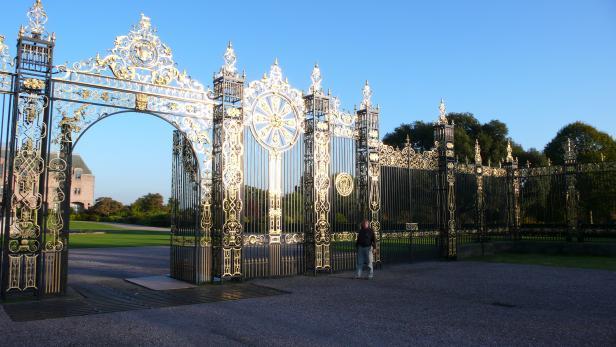Mullins Studio based in Nantwich, Cheshire, is a member of the National Churches Trust’s Professional Trades Directory. The studio’s founder, Colin Mullins, is an historical gilder and restorer of all kinds of decorative surfaces.
Conservation takes time, according to Colin Mullins who finds many people do not realise how long it takes to do justice to the work of the artisans who have gone before him.
“Everything is hurried these days but the great craftsmen and women of the past did not think like that and I don’t either,” he says.
Members of Colin’s family have been gilders and church painters for generations and he has been fascinated by powder pigment, gold leaf and heraldry for as long as he can remember. In a career spanning 45 years, he has worked on a huge range of projects.
An ecclesiastical colour man
He describes himself as an “ecclesiastical colour man” and explains the term thus: “An ecclesiastical colour man is someone who does all kinds of artwork including gilding and carving. You might have a vaulted ceiling with angels, stars and frescoes. You might have to replicate a particular type of marble or wood grain. You should be able to do the lot.”
Colin has worked at Buckingham Palace, Hampton Court, the Houses of Parliament and other landmark buildings. One recent job involved gilding and marbleising surfaces at the 1875 Byzantine-style chapel at Great Ormond Street Hospital for Children in central London. He had to match alabaster to cover a space left on the rear wall when the altar was moved. He used a traditional medium comprising raw linseed oil, white spirit and turpentine to which he added colour.
“Some people use acrylics but to get the fine detail and that luminous lustre you have to use traditional materials,” says Colin.
Carved mahogany Easter candleholder
At St Margaret’s, Westminster, he simulated five different types of marble to restore the carved mahogany Easter candleholder.
On another commission, he worked out the original craftsman used an extremely fine comb to reproduce a tight wood grain. After much research, he achieved a similar effect with plastic nit combs. He maintains he has never once failed to replicate a finish.
“You have to get into the mind set of the original craftsmen,” adds Colin. “You look at the work and study it to draw out how they did it. That’s the most essential thing. It’s like looking deep into a mirror. The base comes first, then the different layers till you get to the final finish.”
Buckingham Palace ballroom
One challenging project was to restore artwork and gilding on the elaborate casing of the organ in the ballroom at Buckingham Palace. He identified at least four different kinds of decoration that he was required to replicate.
Colin has lots of trade secrets, particularly with gilding, but he is happy to share one of them: “I always use pure gold leaf. It’s a richer colour and it will outlast any other gold by 100 years. It costs a little more but it’s worth every penny.”
Profile written by Elena Curti.
You can contact Mullins Studio via colin.mullins@gmail.com and there are more details on their website

